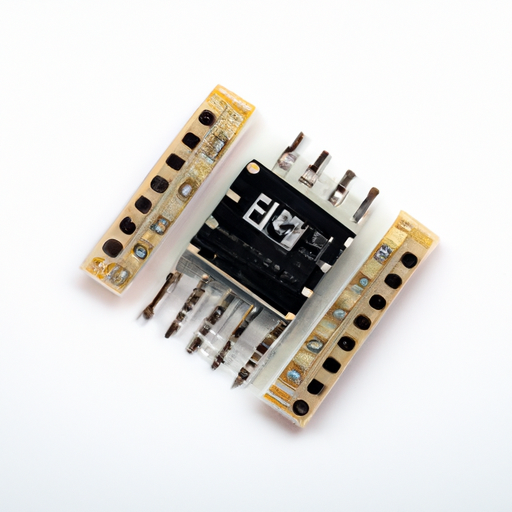CFR-50JB-52-1R8 DIACs, SIDACs highlighting the core functional technology articles and application development cases of DIACs, SIDACs that are effective.
Overview of DIACs and SIDACs
DIACs (Diode for Alternating Current) and SIDACs (Silicon Diode for Alternating Current) are essential semiconductor devices in power electronics, primarily used for controlling and switching AC signals. Their unique operational characteristics make them suitable for a variety of applications, including light dimming, motor speed control, and over-voltage protection.
Core Functional Technology
1. DIACs (Diode for Alternating Current)
- **Structure and Operation**:
- DIACs are two-terminal devices that exhibit a breakover voltage characteristic. They remain in a non-conducting state until the voltage across them exceeds a specific threshold, at which point they switch to a conducting state. This behavior allows DIACs to be used for triggering other devices, such as TRIACs.
- **Key Features**:
- **Bidirectional Conductivity**: DIACs can conduct current in both directions, making them suitable for AC applications.
- **Breakover Voltage**: The precise voltage at which the DIAC switches from non-conducting to conducting is a critical parameter for design.
| Applications:Applications: |
| Key Features:Key Features: |
| Applications:Applications: |
| Phase Control: Used in light dimmers and motor speed controllers.Phase Control: Used in light dimmers and motor speed controllers. |
| Timing Circuits: Employed in timing applications due to their predictable switching behavior.Timing Circuits: Employed in timing applications due to their predictable switching behavior. |
| Snubber Circuits: Protects sensitive components from voltage spikes.Snubber Circuits: Protects sensitive components from voltage spikes. |
| Higher Power Handling: SIDACs can manage larger currents and voltages compared to DIACs.Higher Power Handling: SIDACs can manage larger currents and voltages compared to DIACs. |
| Fast Response: They provide a quick response to voltage changes, making them ideal for protection applications.Fast Response: They provide a quick response to voltage changes, making them ideal for protection applications. |
| Over-Voltage Protection: Commonly used in surge protection devices.Over-Voltage Protection: Commonly used in surge protection devices. |
| Surge Protection: Protects sensitive electronic components from voltage spikes.Surge Protection: Protects sensitive electronic components from voltage spikes. |
2. SIDACs (Silicon Diode for Alternating Current)
- **Structure and Operation**:
- SIDACs are similar to DIACs but are designed to handle higher power levels. They also switch on and off based on the applied voltage, making them suitable for robust applications.
Application Development Cases
1. Light Dimming Circuits
- **Description**: DIACs are integral in light dimmers, allowing for the control of incandescent bulb brightness by adjusting the phase angle of the AC waveform.
- **Implementation**: A circuit can be designed where a DIAC triggers a TRIAC at a specific phase angle, effectively controlling the power delivered to the light bulb. This results in smooth dimming without flickering.
2. Motor Speed Control
- **Description**: Both DIACs and SIDACs can be utilized in motor control applications to adjust the speed of AC motors.
- **Implementation**: A speed control circuit can be created using a DIAC to trigger a TRIAC, allowing for variable speed control of small AC motors, such as fans or pumps. This method provides efficient control over motor performance.
3. Over-Voltage Protection
- **Description**: SIDACs are frequently used in surge protection devices to safeguard sensitive electronic components from voltage spikes.
- **Implementation**: A SIDAC can be connected in parallel with the load. When a surge occurs, the SIDAC conducts, diverting excess current and clamping the voltage to prevent damage to the load.
4. Snubber Circuits
- **Description**: DIACs can be employed in snubber circuits to protect switching devices from voltage transients.
- **Implementation**: A snubber circuit can be designed using a DIAC in series with a resistor and capacitor, effectively absorbing voltage spikes during switching events. This configuration helps to prolong the lifespan of components like TRIACs and MOSFETs.
Conclusion

DIACs and SIDACs are versatile components that play a crucial role in various applications within power electronics. Their ability to control and switch AC signals makes them essential in light dimming, motor control, over-voltage protection, and snubber circuits. Understanding their core functional technology and exploring practical application development cases can lead to innovative solutions in electronic design and engineering. As technology advances, the integration of DIACs and SIDACs into new applications will continue to evolve, enhancing the efficiency and reliability of electronic systems.









